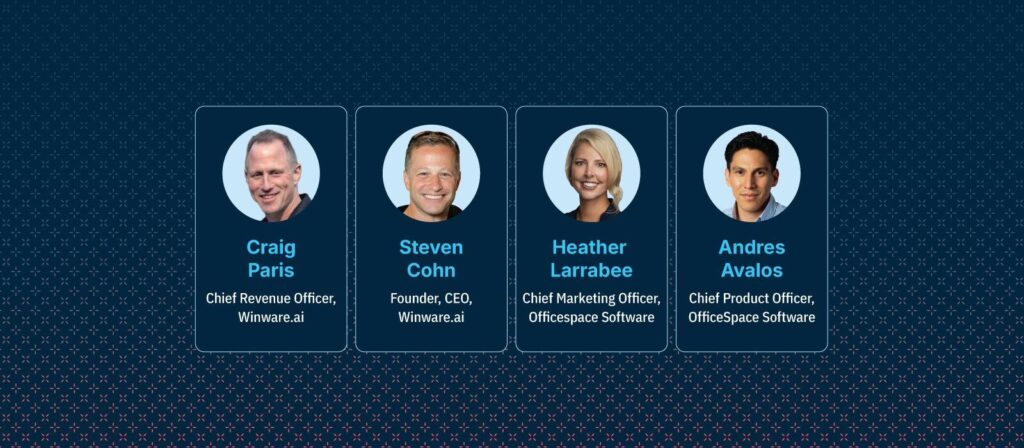Real estate and facility management: 6 ways to use CRE software in facilities

If you’re a facility manager working for a company with several properties, commercial real estate software can be a game-changer for day-to-day operations. In this article, we’re looking at the relationship between real estate and facility management.
From varying lease costs and fees to diverse spaces and occupancy capabilities, managing multiple properties may feel like running on a hamster wheel.
You need real estate management software that acts as a central hub of information for each property.
Here, we dive into the unique benefits and features of commercial real estate software and how you can use it to manage your spaces better.
Real estate and facility management: What is commercial real estate management software?
Commercial real estate management software is a platform that enables facility managers (and real estate professionals) to manage properties all from a centralized place. This type of software coincides with other workplace management software such as computer-aided facility management (CAFM) software, computerized maintenance management system (CMMS) software, and more.
With real estate management software, facility managers can view rich building information, such as:
- Property data
- Space utilization
- Lease management information
- Costs and budgets
Property management software helps facility managers gain a comprehensive understanding of the properties they oversee. It also provides data—like occupancy rates and employee information—that inform better decisions.
Let’s take a look at some of the significant ways facility managers can leverage these platforms.

Manage your entire real estate portfolio from one intuitive facility management software platform
With real estate management software, facility managers can see what’s happening across their properties and take action or prioritize tasks. Because you can access your lease and usage data in one place (and in real-time), you can instantly see where space is underutilized, where your budget is going to waste, and more. This software type also provides facility managers with the tools they need to make improvements quickly and efficiently.
Technology like this can help tremendously with post-COVID-19 office planning. Figuring out how to reconfigure the office, determining many employees you can have in the office at once, and other logistics can be a headache. But property management software streamlines these components.
For example, suppose you know your company won’t be using ~50% of one of its properties due to implementing a hybrid work model. In that case, you can determine alternative uses for that space with real estate management software, like renting it out, using it in a different way that benefits the company.
Get a pulse on your properties with real-time data
Overseeing several properties can get complicated quickly. Without a pulse on each space, it can be easy for things to slip through the cracks.
With real estate management software, never wonder what’s happening within each of your properties again with access to real-time data. You can get the real-time data you need in seconds, like cost per employee, vacancy, and occupancy rates.
Plus, as the workplace continues to evolve due to COVID-19, it’s essential to know where employees are working at any given time. This information can also help FMs plan future space logistics and more informed decisions, resulting in more effective space planning, leaner space utilization, and happier employees.
Also, property management software helps keep track of maintenance requests, dates, and notifications. That way, you know what’s going on with each property at all times.

Easily track leases and critical dates
Keeping tabs on essential documents and information like leases, important dates, etc., can be a headache. Each of your properties is unique in its own way, and therefore has different dates, terms, and fees that you need to manage.
Real estate management software streamlines administrative tasks, like keeping track of important documents, dates, and files. It serves as a centralized place for this information to live not only so you and your team always know where it’s at, but so you can update it as you need.
Missed dates and lost files are a thing of the past with property management software.
Standardize your lease management costs
The pandemic has caused businesses of all industries and sizes to shift to survive. The real estate industry is no exception.
To make up for dropping costs, many property managers are offering incentives for tenants to not only stay but extend their leases — like free rent for a period, reduced rent rates, referral incentives, and more.
This changing landscape can be tricky to keep up with, especially if you’re managing several properties at once. For example, you may have a reduced rent rate at one property and referral incentives at another.
Real estate management software ensures your books are normalized, so no information is skewed due to these individual changes. This saves facility managers time and keeps your books clean.

Maximize your space usage
With real estate management software, you’ll never second-guess a move or a need for more space again. View trending growth trajectories of different aspects of your properties, including sites, floors, and departments. Growth Reports allow you to access these trends and watch them grow over time.
A tool like OfficeSpace’s block and stack tool Stack Plans helps facility managers adjust or reconfigure floor plans or department areas with a few clicks. Intelligent and user-friendly tools like drag and drop and allocation queues make changing up your space easy — whether you want to stack plans, plan a move, shuffle departments, or block and stack underutilized space. That way, you can optimize your space based on what your company needs with the spatial data to guide your decision-making process.
Access high-level portfolio information instantly
As a facility manager, data is a critical part of your day-to-day. Whether you need quick access to details regarding one of your properties or if you need to pull occupancy data for your COO, real estate management software makes it easy. View information like maximum capacity, current occupancy, and other helpful high-level data.
OfficeSpace’s Stack Plans feature enables facility managers to block and stack plans, understand what properties and space your company is working with, and more. Also, facility managers can give employees access to your company’s online portal, so they can view important property information when they need it.
Keep real estate and facility management top of mind while redefining the meaning of commercial real estate with property management software
The way companies use commercial space has changed, and facility managers need tools that can keep up with where the industry is going. Whether you’re leasing a property or own it outright, it’s vital to have a pulse on your company’s different spaces.
Real estate management software designed to maintain the evolving facilities landscape plays a key role in a company’s success. Also, property management software offers reporting and analytics capabilities to help facility managers optimize their workspaces and properties based on company-specific trends.
Curious about OfficeSpace’s Stack Plans feature? Contact our team, and we’ll help you find a solution that’s right for you.
Photos: metamorworks, Kaitlyn Baker, Anthony DELANOIX, Austin Distel



